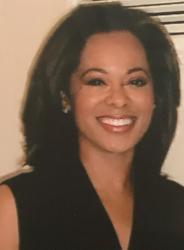Featured
Justice Ruth Bader Ginsburg References Thurgood Marshall During Clinton Library Speech

Supreme Court Justice Ruth Bader Ginsberg held court with an enthusiastic crowd of 15,000 who listened intently to the beloved jurist discuss historical opinions, her career as a lawyer, and her health. The Clinton Foundation and Clinton School of Public Service located in Little Rock sponsored the lecture featuring the 86-year-old who was appointed to the high court by then-President Bill Clinton.
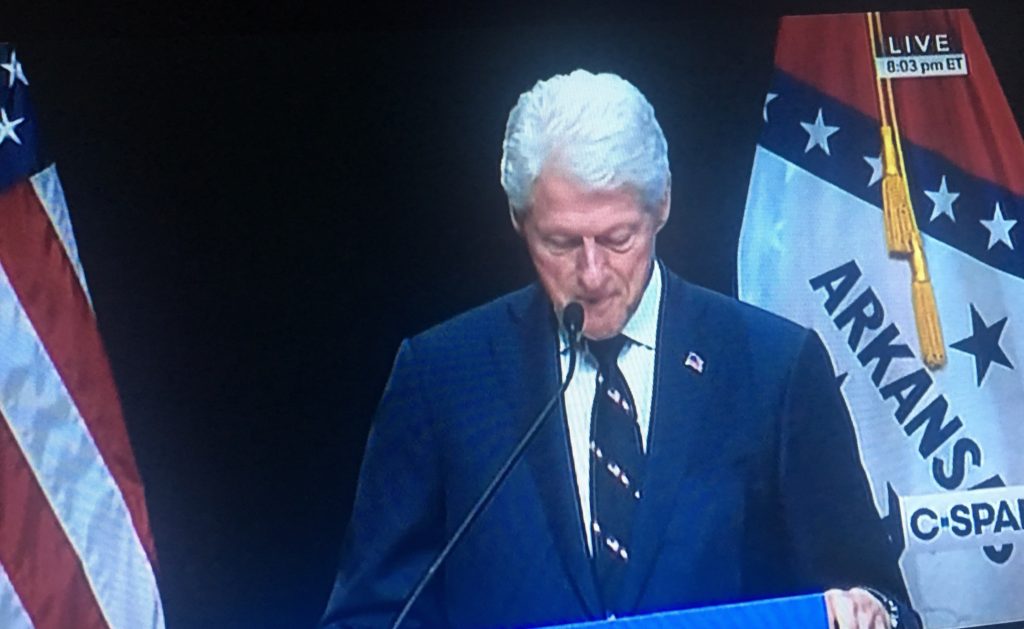
“I carefully reviewed their resumes, but also their life stories,” Clinton remarked as he talked about his decision to nominate Ginsberg for the Supreme Court in 1993. “I was so engrossed in her story when we were sitting there and I kept peppering her with questions, that I suddenly felt that I was really not interviewing somebody for the Supreme Court at all I was just a guy talking with somebody that I really liked, and that I hoped could be a part of our future.”
Ginsburg recalled, “It was one of the happiest moments of my life.”
For 25 years, Ginsburg has been a member of the Supreme Court. During the hour-long lecture moderated by NPR’s Nina Totenberg, the “small but auspicious” Justice discussed her view of the Constitution as a living document as opposed to one that should be interpreted based on the Founding Fathers original intent.
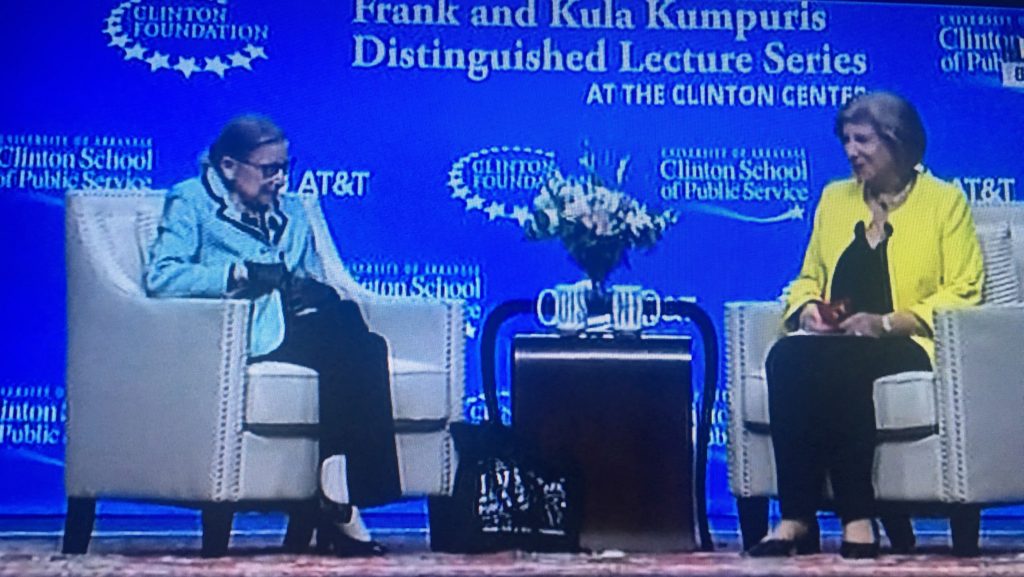
“Our Constitution begins with the words, ‘We, the People,’” Ginsburg reminded the audience. She explained the living document concept by raising the question, “Who are We, the People?”
She continued, saying, “certainly not the people held in human bondage because it [the Constitution] preserved slavery, certainly not women or men who did not own property.”
“The Fugitive Slave Clause is an embarrassment,” she stated.
The Fugitive Slave Clause is in Article 4 of the Constitution and allowed authorities to capture slaves who escaped to free states and return them to their masters. The Clause is still part of the Constitution more than 151 years after the ratification of the 14th Amendment which abolished slavery and gave newly freed slaves citizenship.
The Brooklyn-born Ginsburg referenced the first Black Supreme Court Justice, Thurgood Marshall, who also worked as an attorney for the NAACP and sharply criticized the original intent of the Founding Fathers who helped preserve slavery with Article 4 of the Constitution. She cited Marshall as a Justice who didn’t “celebrate the original intent but what it has become.”
Ginsburg emphasized to thunderous applause that “now once-left-out people are part of our more perfect union.”
Ginsberg recently underwent three weeks of chemotherapy for a tumor on her pancreas. In December she had surgery for lung cancer. While Republicans eye her seat on the Court as an opportunity to appoint another conservative justice, Ginsburg is still focused on her work.
She explained, “I think my work is what saved me because instead of dwelling on my physical discomforts, if I have a brief…I have to get it done. I have to get over it.”

In light of her health challenges, Totenberg jokingly asked Ginsburg, “Why are we here tonight?”
To which the iconic RGB replied, “I had promised the Clinton Library I would be here…and, I’m pleased to say I am feeling very good tonight.”
Unfortunately, cancer is no stranger to Ginsburg. When she and her husband were in law school, he battled cancer.
“We took it day-by-day. We always believed we would prevail,” she said.
And, the young couple did. Marty Ginsburg graduated from Harvard Law School, and when he graduated and took a job in New York, the future-Supreme Court jurist sjoined her husband and transferred from Harvard to Columbia Law School where she graduated.
The Ginsburgs were married for 56 years and had two children. Marty Ginsburg actively supported his wife’s nomination to the Court. Ginsburg was the second female U.S. Supreme Justice. Sandra Day O’Connor, who was appointed by Ronald Reagan, had been there 12 years when Ginsburg arrived. Together, they recognized the differences in the way they and their male colleagues were treated. But, today there are three women on the Court: Justices Ginsburg, Sonia Sotomayer, and Elena Kagen.
“My sisters-in-law are not shrinking violets,” Ginsburg noted with a smile.
And, neither is she to the delight of millions of Americans.

-
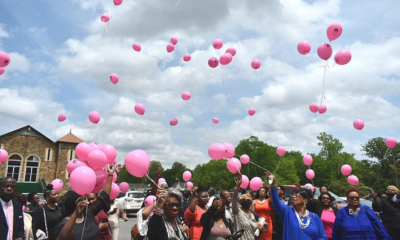
 Featured10 months ago
Featured10 months agoCalifornia Is the First State to Create A Public Alert for Missing Black Youth
-
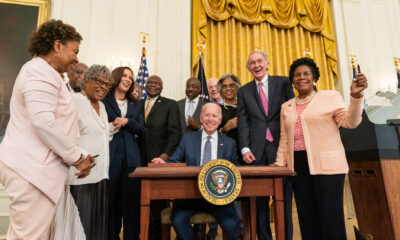
 Featured10 months ago
Featured10 months agoAfrican American Leaders Stay the Course Amid Calls for President Biden To Bow Out of Race
-

 Featured10 months ago
Featured10 months agoThe Debate Fallout Lands on Both Candidates
-

 Featured9 months ago
Featured9 months agoPresident Joe Biden Decides to Withdraw from the Presidential Race
-

 Featured9 months ago
Featured9 months agoIn One of His Final Speeches as President, Biden Says It’s Time for ‘Fresh Voices’
-

 Featured10 months ago
Featured10 months agoPresident Joe Biden Describes Shooting of Donald Trump As ‘Sick’

